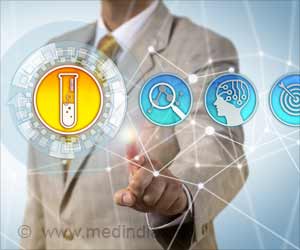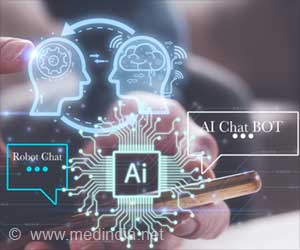A novel precision medicine approach enhanced by artificial intelligence (AI) has laid the groundwork for what could be the first biomedical screening and intervention tool for a new subtype of autism.

‘Scientists identified a strong association between parental dyslipidemia and risk of developing autism spectrum disorder in their children.’
Read More..




"The autism subtype characterized by abnormal levels identified in this study is the first multidimensional evidenced-based subtype that has distinct molecular features and an underlying cause."Read More..
Luo is also chief AI officer at the Northwestern University Clinical and Translational Sciences Institute and the Institute of Augmented Intelligence in Medicine. He also is a member of the McCormick School of Engineering.
Autism affects an estimated 1 in 54 children in the United States, according to the Centers for Disease Control and Prevention. Boys are four times more likely than girls to be diagnosed. Most children are diagnosed after age 4, although autism can be reliably diagnosed based on symptoms as early as age 2.
The subtype of the disorder studied by Luo and colleagues is known as dyslipidemia-associated autism, which represents 6.55% of all diagnosed autism spectrum disorders in the U.S.
"Our study is the first precision medicine approach to overlay an array of research and health care data -- including genetic mutation data, sexually different gene expression patterns, animal model data, electronic health record data and health insurance claims data --and then use an AI-enhanced precision medicine approach to attempt to define one of the world's most complex inheritable disorders," said Luo.
Advertisement
"This discovery was like finding a needle in a haystack, as there are thousands of variants in hundreds of genes thought to underlie autism, each of which is mutated in less than 1% of families with the disorder. We built a complex map, and then needed to develop a magnifier to zoom in," said Luo.
Advertisement
"The map and magnifier approach showcases a generalizable way of using multiple data modalities for subtyping autism and it holds the potential for many other genetically complex diseases to inform targeted clinical trials," said Luo.
Using the tool, the research team also identified a strong association of parental dyslipidemia with autism spectrum disorder in their children. They further saw altered blood lipid profiles in infants later diagnosed with autism spectrum disorder. These findings have led the team to pursue subsequent studies, including clinical trials that aim to promote early screening and early intervention of autism.
"Today, autism is diagnosed based only on symptoms, and the reality is when a physician identifies it, it's often when early and critical brain developmental windows have passed without appropriate intervention," said Luo. "This discovery could shift that paradigm."
Source-Eurekalert












